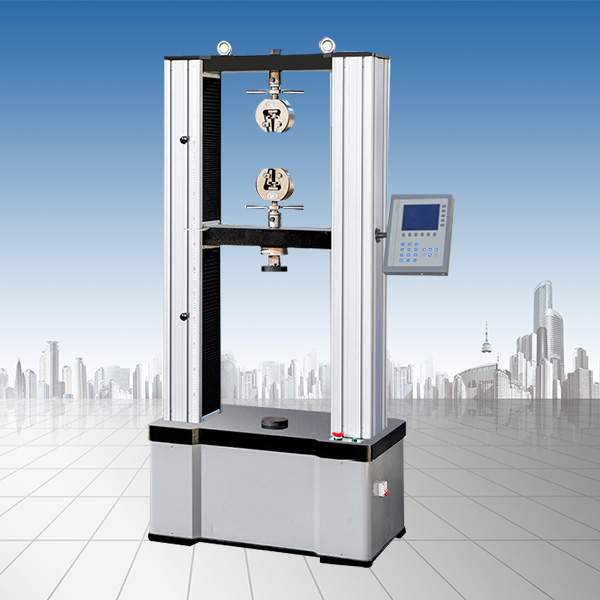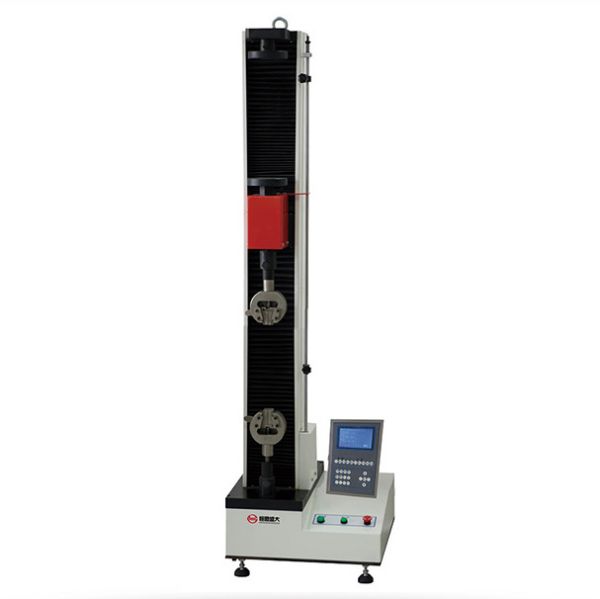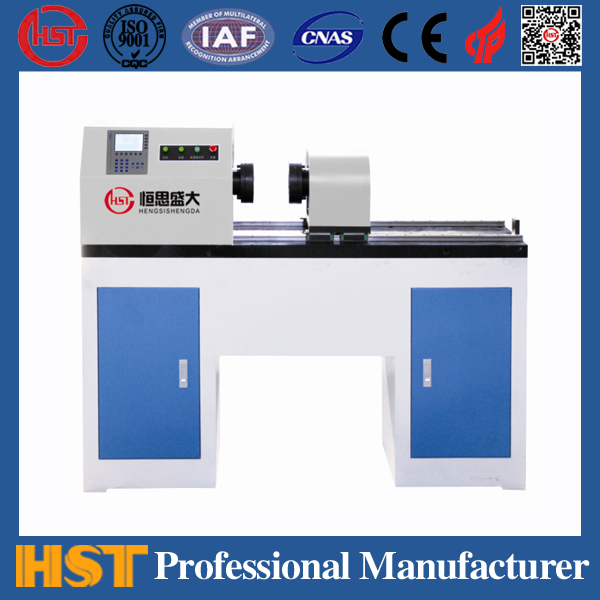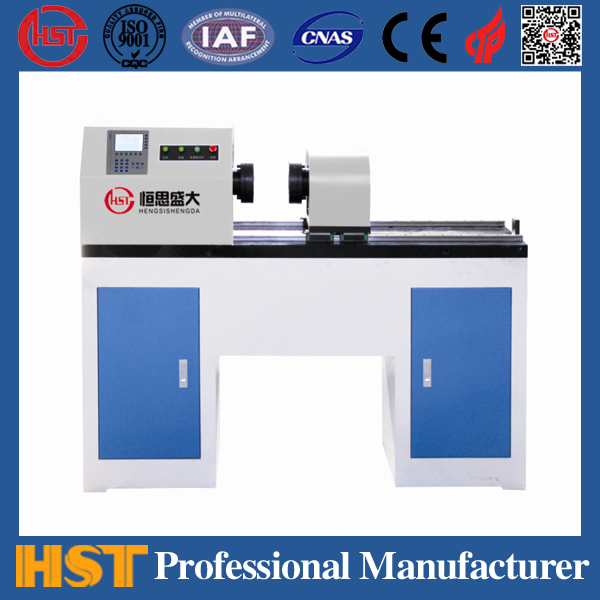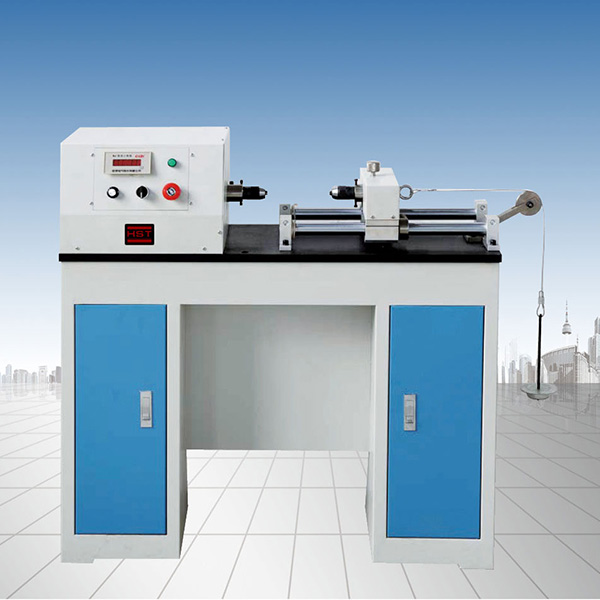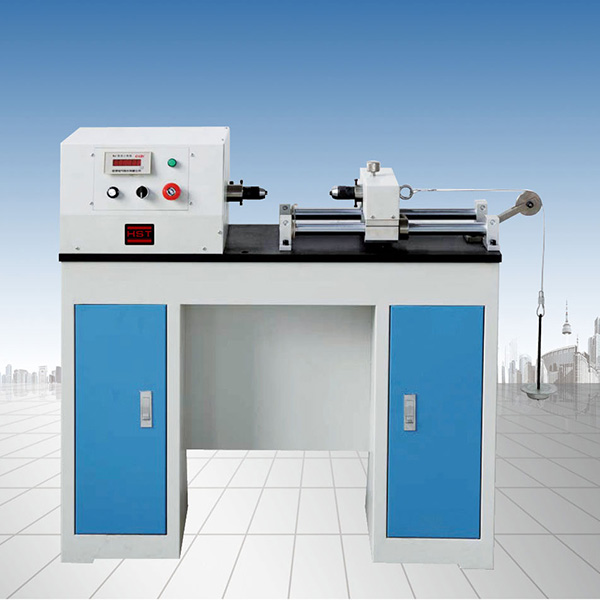Company News
Experts introduce common faults and detection methods for testing machines
Release time:2018-11-23 source:Jinan Hengsi Shanda Instrument Co., Ltd. Browse:
Common faults: When loading, sometimes the load cannot be added or unloaded during loading. This type of failure occurs frequently and causes many reasons.
1. The viscosity of the oil is too low (the oil flows out of the oil return pipe of the oil supply valve when loading). Generally, mineral oil of medium viscosity is used, which does not contain water, acid and other mixtures, does not decompose at room temperature, and does not thicken. If necessary, it can be measured with a viscometer. If the oil is used improperly, it will cause the valve and oil circuit to be blocked and may cause vibration or pipeline leakage. Oil should be used as required in the instructions.
2. The oil pressure system has severe oil leakage. The oil leakage in the oil circuit system generally occurs at the connections of the buffer valve, oil return valve, oil supply valve, oil pump and pipeline. Just tighten the screws after adding pads. If the sealing gasket is broken, it must be removed and replaced with a new one. The gaskets should be made of copper or aluminum alloy.
3. The fuel tank oil volume is insufficient. When loaded to a certain load, there will be a "puff" or "puff" sound on the oil return pipe of the oil supply valve, and there will be less oil and bubbles. When the load cannot rise any further, no oil flows out of the return oil pipe. Exclusion method: Recharge oil into the test engine oil tank until the oil level reaches half of the oil viewing window.
4. The oil collector of the oil pump is not pressed on the pump body. In this way, each load can only reach a certain load, and the load cannot rise any further, and there is no oil flowing out of the oil supply valve return pipe. Exclusion method: Use a wrench to tighten the fixing screws at the rear end of the oil pump. If there is still a problem, remove the oil collector and add a gasket between the oil collector and the pump body.
5. The matching gap between the working piston and the oil cylinder is too large, and the gap is too oil spilled, which can be seen from the oil spill and other outlets. The method is to thicken the viscosity of the oil. If the problem cannot be solved, after precise measurement, you should go to the manufacturer to replace the piston and oil cylinder.
6. The gap between the force-measuring piston and the force-measuring cylinder is large. When it reaches high tonnage, it can be seen from the lower part of the force-measuring cylinder. Normally, there is no oil drop or intermittent drops when there is high tonnage. If it flows out in a linear shape, it means that the force measuring piston should be replaced. When observing oil leakage, you should pay attention to the difference between oil leakage at the joint and oil leakage at the cylinder plug, and you should not make wrong judgments due to misreading.
7. The piston and piston sleeve in the oil supply valve are damaged or the spring becomes soft. In this way, the load that can be achieved by each load remains basically unchanged, and the oil supply valve is noisy. When the load cannot rise, the oil output of the oil supply valve returns the oil pipe is large. The piston and piston sleeve should be removed and ground. If the damage is serious, the spring should be replaced.
8. The oil supply valve has a low stiffness in the pressure-regulating spring or the throttle needle cavity is blocked. Main manifestations: Each load can only reach a certain load. When the load cannot rise again, the oil output of the return oil pipe is large. Exclusion method: Replace the pressure stabilization spring with appropriate stiffness or clean dirt.
9. The gap between the damping needle and the damping hole of the oil supply valve is too small. Main manifestations: Each load can only reach a certain load. When the load cannot rise again, the oil output of the oil return pipe of the oil supply valve is large. Exclusion method: Take out the damping needle and file part of it with a file along the axial direction of the damping needle.
10. The belt that drives the oil pump to loosen and slip. After loading to a certain load, the oil supply valve return pipe does not flow out, and the oil pump does not work sound. Exclusion method: Loosen the motor fixing screws, adjust the position, tighten the belt, and then tighten the motor fixing screws. If the belt is too deformed, a new belt must be replaced.
11. The oil pump plunger is rusted. Main manifestations: During the loading process, the oil output of the oil supply valve return pipe is discontinuous or fluctuates. When a certain load cannot rise, no oil flows out of the return oil pipe. Exclusion method: Remove the plunger and re-polish it.
12. The test machine with a fuse valve can automatically open when the load exceeds 3% to 5%, ensuring that the test machine will not be damaged due to excessive overload. When the safety valve is not adjusted at the time, or the valve tip and hole are not tightly closed, the pressure will not be high. The adjustment method is to remove the safety valve adjustment screw, check the parts damage and replace it. If it is overloaded too much, rotate the screw downward and vice versa.
Common faults: During the loading process of the test machine, the fuselage vibrates, the pointer rotates unsteadily, and the value cannot be read accurately. There are many cases where this reason occurs.
First, the vibration source that may cause resonance around the test machine should be eliminated, and then observe whether the machine installation foundation is solid and check whether the motor is faulty.
After solving these problems, if there is still instability in the pointer, then it is necessary to consider whether there is air in the oil circuit system.
The method is: start the oil pump, close the oil return valve, so that the main piston rises for a certain height, and then open the oil return valve to allow the oil to flow back to the oil tank from the main oil cylinder of the oil pump through the oil return valve. This cycle can be performed for a period of time and the air in the main cylinder can be discharged. Then unscrew the screws in the exhaust hole of the fuel tank and tighten when the oil emitted does not contain bubbles. In addition, the high-pressure oil pipe of the oil pump can also be removed and the motor can be started to completely remove the air in the oil pump. For testing machines that are used for a long time, oil should be changed regularly and the tooth rods, gears, pointers and screws of the force-testing part should be cleaned. (It should be noted here that when cleaning the reel, the diameter of the replaced string should meet the requirements, and the direction and number of turns on the reel should be appropriate.) The oil is too dirty and sometimes the pressure of the oil supply valve will be changed due to blockage of debris, causing the oil volume to circulate unevenly. The lengths of the two triangle belts connected to the oil pump are inconsistent, the plunger in the oil pump does not work normally or the gaps between the seven sets of oil distribution valves will cause vibration of the test machine.
Common faults: During tensile tests, the sample fracture is always broken on both sides. The reason for this phenomenon should first consider whether the installation of the main part of the test machine is vertical. If this reason is excluded, then it will be excluded from the following three aspects.
1. If the jaws are not placed in a straight position when clamping, the jaws should be clamped symmetrically as required.
2. The jaws are of poor quality and damage to the teeth. In addition to affecting the jaws, the sample is slipped during the test, making it difficult to identify the yield point. The jaws should be replaced at this time.
3. The lifting guide wheel is not adjusted properly, causing the upper and lower jaws to be different from the center. A test rod should be processed, and after the upper and lower jaws are tightened, use a dial gauge to measure with two force columns until the adjustment is qualified.
Common faults: The pendulum position is abnormal, and the pendulum rod is not marked vertically.
The main reason is that the oil has too much viscosity or the oil is too dirty. Exclusion method: Replace oil with appropriate viscosity.
The force measuring piston rotates with great friction or does not rotate. Troubleshooting method: Check whether the test machine is level and troubleshoot the force-testing piston.
There is unstable friction. Exclusion method: Clean the swing shaft bearing, tooth rod, pointer, and lug, adjust the level of the test machine to reduce the existing unstable friction.
Common faults: The hammer returns to the position abnormally, sometimes fast and sometimes slow.
Normally, just rotate the buffer to the appropriate position. However, if the oil hole of the buffer is blocked, or the steel ball of the buffer valve has a stolen property with the inlet contact part or the gap is too large, the buffer will fail. The solution is to clean the buffer valve and adjust the gap between the steel ball and the valve seat to about 0.5mm. Place the oil needle knob to reduce the gap between the oil needle and the valve body, and relist the mark of the A.B.C weight. Also, when the temperature has a great influence, the oil can be replaced appropriately.
Common faults: The passive needle cannot stop well in any position and does not coincide with the main needle.
The removal method is to remove the dial glass, adjust the passive needle spring screw, and adjust the pointer to coincide with the main needle.
Common faults: When loading, the oil circuit system is severely leaking or the oil pipe is broken.
First, check whether the joints of the oil circuit system are tightened. If you need to replace the gasket, replace it in time. If the oil pipe is broken, then the oil pipe with higher strength needs to be replaced. In addition, you must observe whether the oil supply valve and relief valve piston are pressed to death or are installed in reverse.
Common faults: After the sample breaks, the pendulum quickly falls back, causing an impact.
The main reason is that the buffer fails. In addition to adjusting according to conventional rules, you should also consider whether the oil is too thin and dirty.
In short, you should pay attention to the usage conditions of the test machine. For the main machine, pay attention to prevent eccentricity and avoid friction; for the force measurement part, prevent impact and dust from entering. Check and correct the test machine regularly to ensure the normal use of the test machine.
- Previous article:The general statement of universal testing machine
- Next article:Testing machines and test machines commonly used in English
Recommended productsPRODUCTS


















